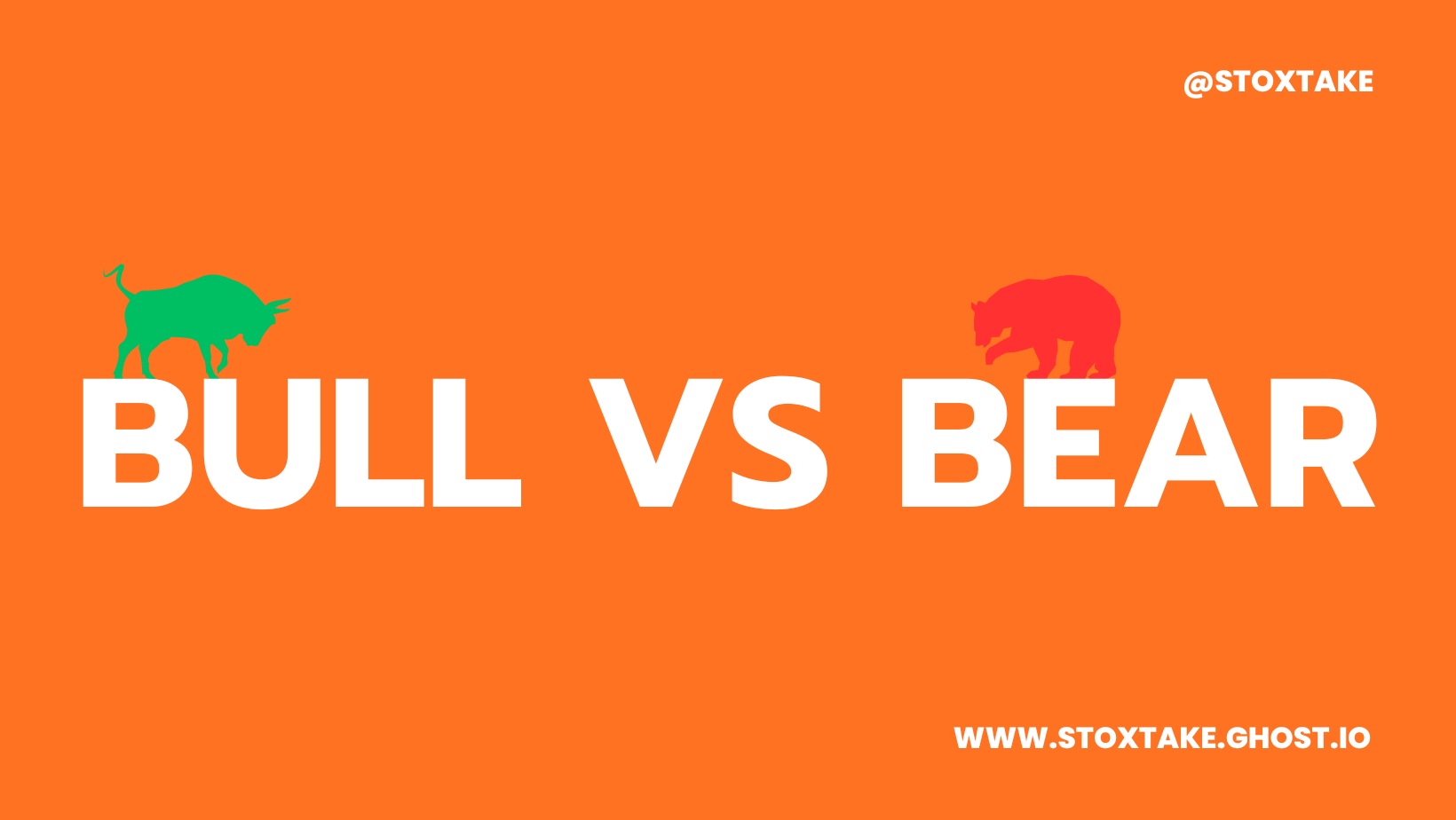Understanding the stock market: Bull vs. bear markets
Have you heard the term bull or bear market but didn't know what it meant. Here's some information on those terms and how they're identified.

In the world of investing, two terms often mentioned are "bull market" and "bear market." These terms are used to describe the overall sentiment and direction of the financial markets. Understanding the differences between bull and bear markets can help investors make informed decisions. In this article, we'll explore the characteristics of both bull and bear markets.
Bull Market
A bull market is characterised by optimism, rising prices, and an overall positive sentiment in the financial markets. In a bull market, investors are confident about the future prospects of the economy and are willing to buy assets with the expectation of future price appreciation. Key features of a bull market include:
- Rising stock prices: During a bull market, stock prices tend to rise consistently over a sustained period. This increase is often fuelled by strong economic growth, increased corporate profits, and positive investor sentiment.
- High trading volumes: Bull markets are typically accompanied by high trading volumes as more investors participate in buying securities.
- Positive economic indicators: Bull markets are often associated with positive economic indicators, such as low unemployment rates, robust GDP growth, and high consumer confidence.
Bear Market
A bear market, on the other hand, is characterised by pessimism, falling prices, and a general negativity in the financial markets. In a bear market, investors are concerned about the future prospects of the economy and tend to sell their assets in anticipation of further declines. Key features of a bear market include:
- Declining stock prices: Bear markets are characterised by a sustained decline in stock prices over an extended period. This decline is often driven by factors such as economic slowdown, corporate earnings contraction, or geopolitical uncertainties.
- Low trading volumes: Bear markets are often accompanied by low trading volumes as investors become cautious and less active in the market.
- Negative economic indicators: Bear markets are typically associated with negative economic indicators, such as rising unemployment rates, sluggish GDP growth, and low consumer confidence.
It's important to note that bull and bear markets can apply to various asset classes, including stocks, bonds, and commodities. Additionally, the duration and intensity of bull and bear markets can vary. Some bull or bear markets can last for several months, while others can persist for years.
Understanding the distinction between bull and bear markets is crucial for investors. It helps them gauge market sentiment, manage their portfolios, and make appropriate investment decisions. Whether it's taking advantage of opportunities in a bull market or implementing defensive strategies in a bear market, being aware of the prevailing market conditions is essential for long-term investment success.